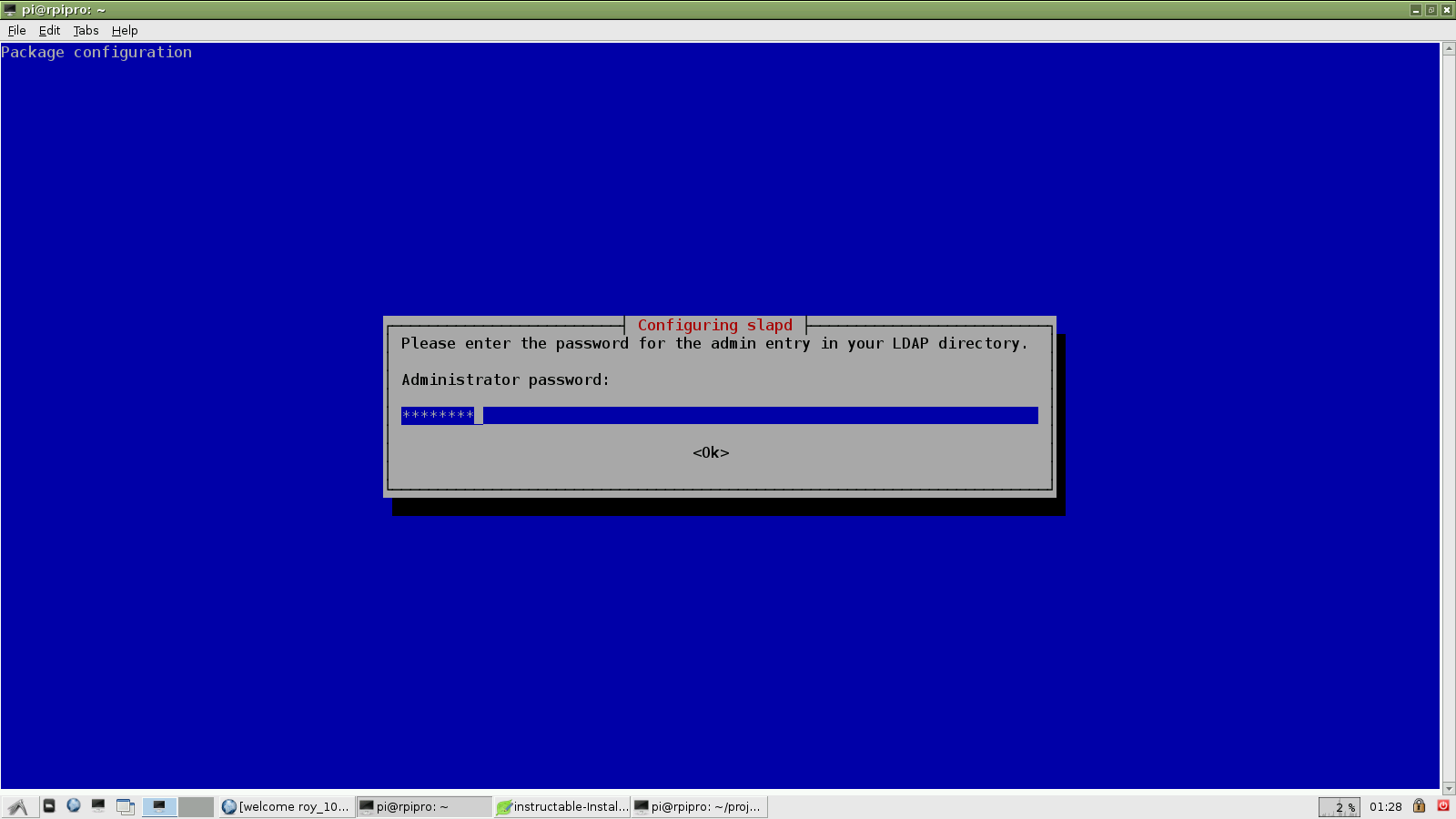Make Raspberry Pi Into a LDAP Server to Store User Account Data and Password
by mirza irwan osman in Circuits > Raspberry Pi
44915 Views, 29 Favorites, 0 Comments
Make Raspberry Pi Into a LDAP Server to Store User Account Data and Password

Introduction
An LDAP server provide the following benefits:
- Authenticate for all the users of Raspberry Pis and computers in your network
- Store files stored /etc directory
- Store contact details that can be useful for email clients
My personal reason of running an LDAP server is to have one central point of authentication. After completing this tutorial, you might be interested in reading "Make Raspberry Pi do LDAP Authentication" instructable.
Scope
This instructable will show how to:
- Install OpenLDAP Server
- Configure OpenLDAP Server
- Load LDAP database with user account and password
- Run OpenLDAP Server Test
This instructable will NOT show how to:
- Make a different remote Raspberry Pi authenticate to the above OpenLDAP server
- Encrypt password sent over the wire
Pre-requisites
Raspberry Pi running Raspbian OS
Environment
The following are data of my Raspberry Pi that runs OpenLDAP Server:
Distributor ID: Debian
Description: Debian GNU/Linux 7.8 (wheezy)
Release: 7.8
Codename: wheezy
Linux rpipro.example.com 3.18.9+ #767 PREEMPT Sat Mar 7 21:41:13 GMT 2015 armv6l GNU/Linux
Reference
Install and Configure OpenLDAP

Open terminal emulator in Raspberry Pi
Configure the domain name of the Raspberry Pi echo "rpipro.example.com" > /etc/hostname
#Replace rpipro.example.com with anything that you want
Reboot the Raspberry Pi:
sudo apt-get update <br>sudo apt-get install slapd ldap-utils
Enter the admin password of the user database "example.com" when prompted
Test that database "example.com" is created:
ldapsearch -x -LLL -H ldap:/// -b dc=example,dc=com dn
OpenLDAP will reply the following to indicate a database is created:
dn: dc=example,dc=com
dn: cn=admin,dc=example,dc=com
Add Account Data and Password to LDAP Database
Download add_content.ldif
Read add_content.ldif. This script is creating a user with uid=john and password=johnldap. The test data will be loaded to database "example.com"
Add the content to database "example.com":
ldapadd -x -D cn=admin,dc=example,dc=com -W -f add_content.ldif
OpenLDAP will display:
Enter LDAP Password: #Enter password entered in Step 1 adding new entry "ou=People,dc=example,dc=com"
adding new entry "ou=Groups,dc=example,dc=com"
adding new entry "cn=miners,ou=Groups,dc=example,dc=com"
adding new entry "uid=john,ou=People,dc=example,dc=com"
Downloads
Test
Check that the data above is actually in the database "example.com":
ldapsearch -x -LLL -b dc=example,dc=com 'uid=john' cn gidNumber
OpenLDAP will display:
dn: uid=john,ou=People,dc=example,dc=com
cn: John Doe
gidNumber: 500